Key takeaways
- The Rule of Thirds involves dividing the frame into nine parts, helping create balance and interest in photos by placing subjects along the grid lines or their intersections.
- It’s important to view the Rule of Thirds as a flexible guideline rather than a strict rule, allowing for experimentation and creative adjustments based on the scene’s mood.
- Utilizing techniques like grid overlays, practicing with simple subjects, and focusing on natural eye movement can enhance composition and lead to more compelling images.
- Evaluating and adjusting shots post-capture is crucial for improvement, often involving small tweaks that can significantly enhance visual appeal and storytelling.
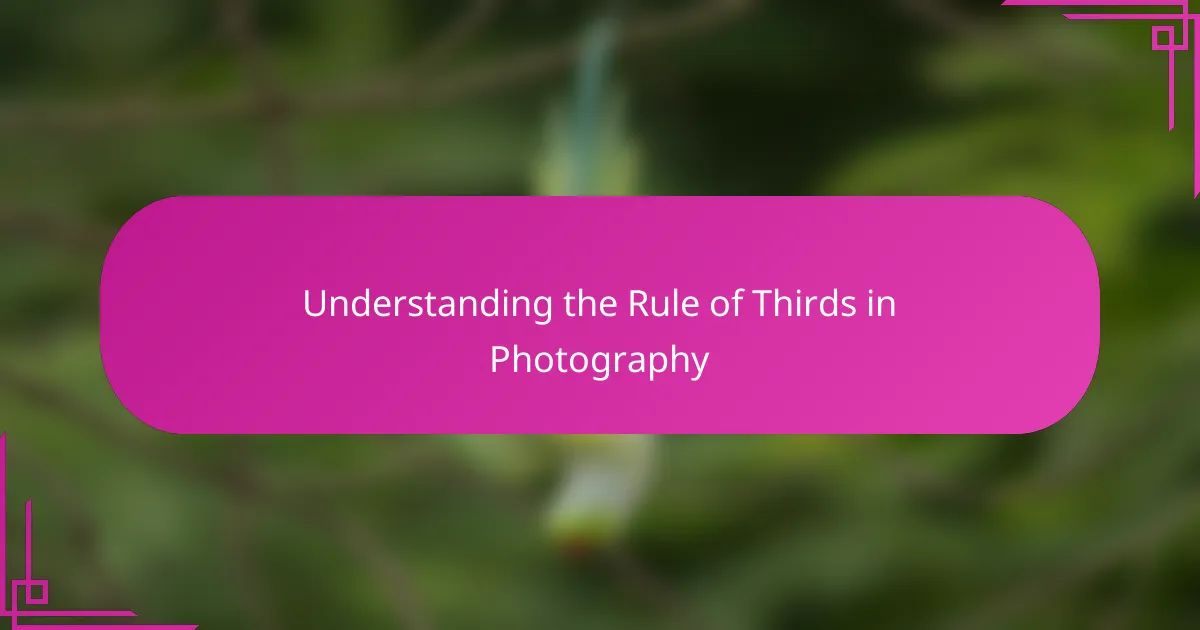
Understanding the Rule of Thirds in Photography
The Rule of Thirds is one of those photography concepts that seemed simple in theory but took me a while to truly grasp. At its core, it’s about dividing the frame into nine equal parts with two equally spaced horizontal and vertical lines, then placing the main subject along these lines or their intersections. But why does this work so well? For me, it’s because it naturally aligns with how our eyes move across an image, creating a sense of balance and interest.
When I first started shooting, I ignored this rule, thinking it was just a boring guideline. Then I tried composing shots using the Rule of Thirds and realized how much more dynamic my photos felt. It’s not just about following rules blindly; it’s about using these lines as a tool to guide viewers into the story you want to tell. Don’t you find that photos with subjects smack in the center often feel flat? This technique helps avoid that rigidity.
Consider it a mental grid that frames your creative vision. The beauty is that it’s flexible—you can choose which intersection to emphasize or even break the rule once you understand it fully. For me, understanding this rule felt like unlocking a new way to see the world through my camera lens, opening up endless possibilities to capture moments with greater intentionality. Have you ever noticed how a little shift in positioning transforms an ordinary shot into something compelling? That’s the magic of the Rule of Thirds.
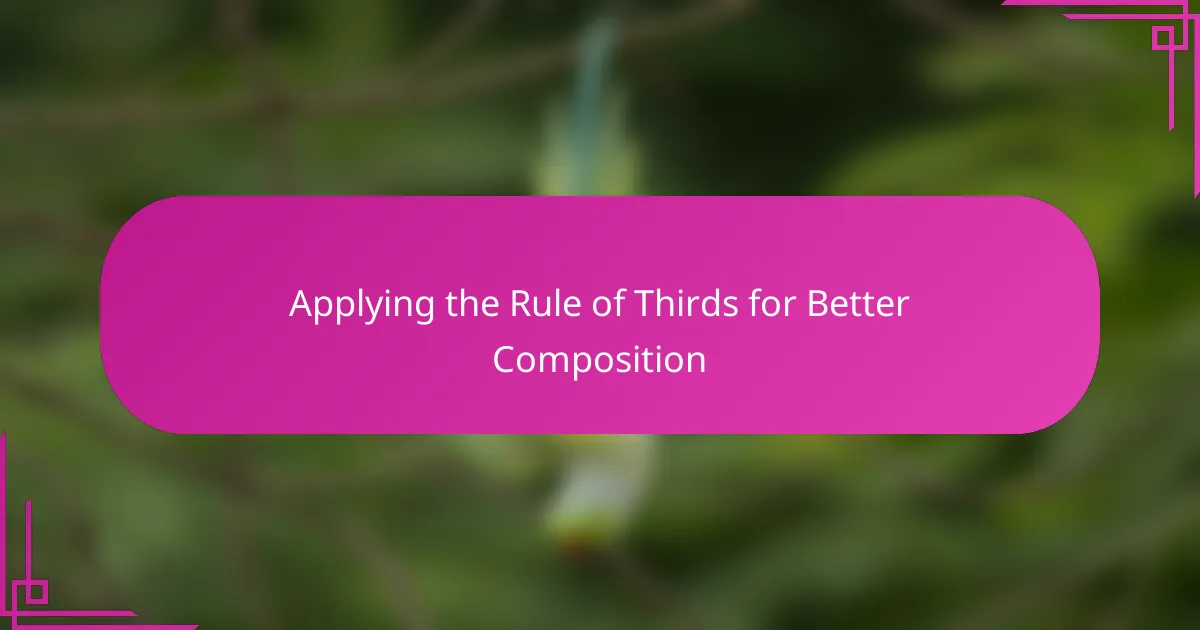
Applying the Rule of Thirds for Better Composition
Applying the Rule of Thirds instantly changed how I approached framing my shots. Instead of centering everything, I started placing key elements along those grid lines or intersections, and suddenly, my images told a clearer story. Have you ever felt that your photos look lifeless? Shifting subjects off-center was the fix I needed.
What struck me was how this simple adjustment added depth without needing complicated settings or gear. When I aligned a horizon or a face with the thirds, the photo felt balanced but still dynamic—like it was inviting the viewer to explore every corner of the frame. It’s subtle, yet so powerful.
Sometimes, I catch myself experimenting around the intersections, asking, “What if I move just a little more this way?” That curiosity led to discovering unique perspectives that felt natural and engaging. For me, applying the Rule of Thirds has become less about strict rules and more about finding harmony in composition.
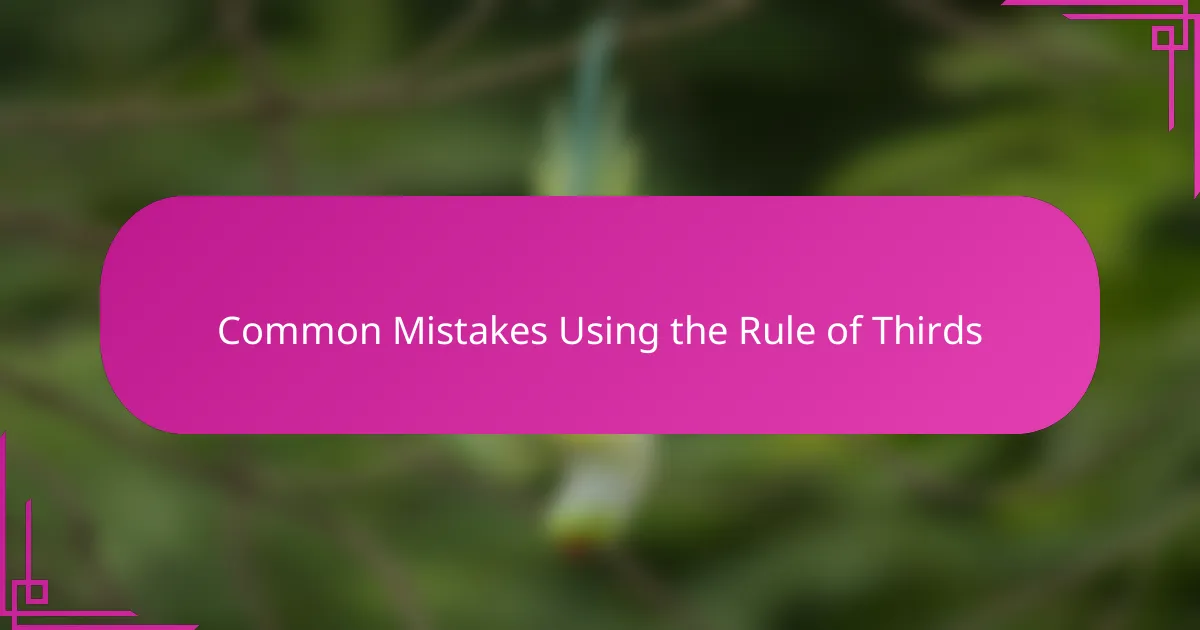
Common Mistakes Using the Rule of Thirds
One mistake I often see—and have made myself—is rigidly sticking to the grid without considering the scene’s mood. Have you ever placed your subject right on a third intersection only to find the photo feels forced or unnatural? That’s a warning sign that the Rule of Thirds shouldn’t be treated like a formula but rather a helpful guideline.
Another trap is neglecting the background and how it interacts with your main subject. Early on, I’d position my subject on a perfect third but overlook distracting elements lurking just off the lines. It taught me that composition isn’t just about where the subject sits, but also what surrounds it—balance goes beyond the grid.
Sometimes, beginner photographers obsess so much over the Rule of Thirds that they forget to experiment. I remember times when I ignored the grid and centered my subject deliberately, only to create a powerful, intentional shot. Knowing when to break the rule is just as important as knowing how to use it. Have you ever felt that tension between following the rule and trusting your eye? That’s where creativity lives.
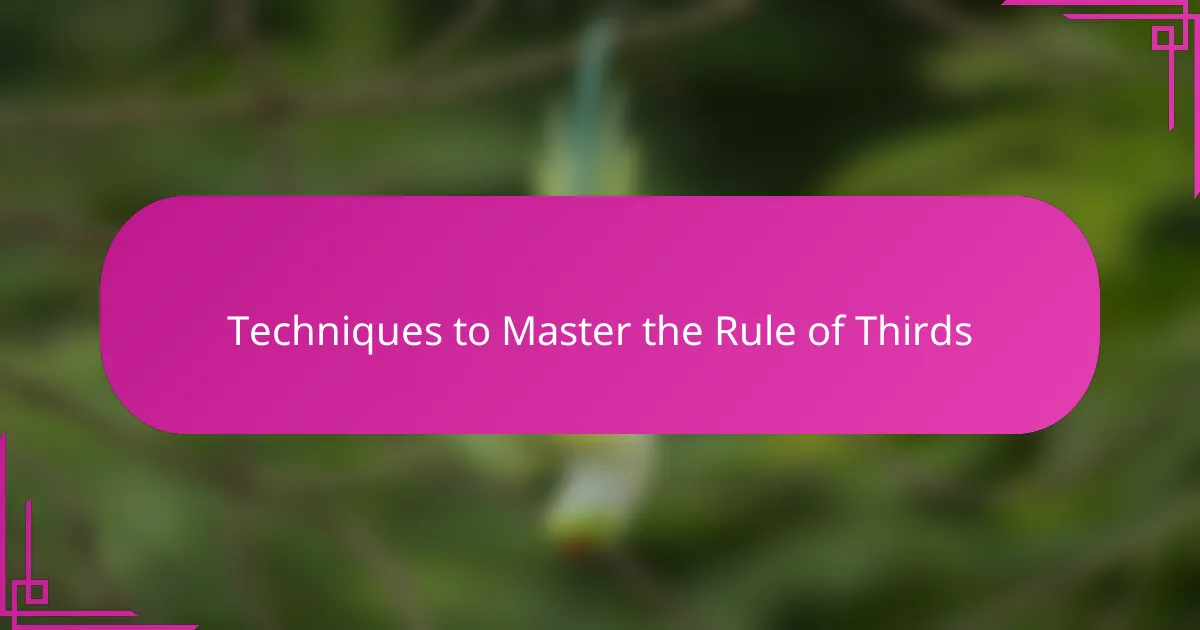
Techniques to Master the Rule of Thirds
One technique that really helped me master the Rule of Thirds was using the grid overlay on my camera or smartphone. At first, it felt a bit mechanical, constantly glancing at lines while composing, but over time, it became second nature. Have you ever tried turning that grid on and suddenly realizing how much easier it is to spot where your subject should sit? It’s like training your eye to see in thirds without overthinking.
I also found it useful to practice with simple subjects—like a single flower or a friend’s portrait—placing them on different thirds and shooting multiple frames. This trial and error approach taught me how small shifts in placement change the mood and focus of an image. It made me wonder: how often do we miss the chance to create more engaging photos just because we’re stuck framing the same way every time?
Lastly, I learned that combining the Rule of Thirds with mindful observation is a game-changer. Instead of forcing the subject onto a grid intersection, I started asking, “Where does my eye want to rest naturally?” Sometimes this meant breaking the rule or adjusting background elements. Have you noticed how some of your best shots come from this balance between structure and intuition? For me, that’s when the Rule of Thirds truly became a tool, not a constraint.
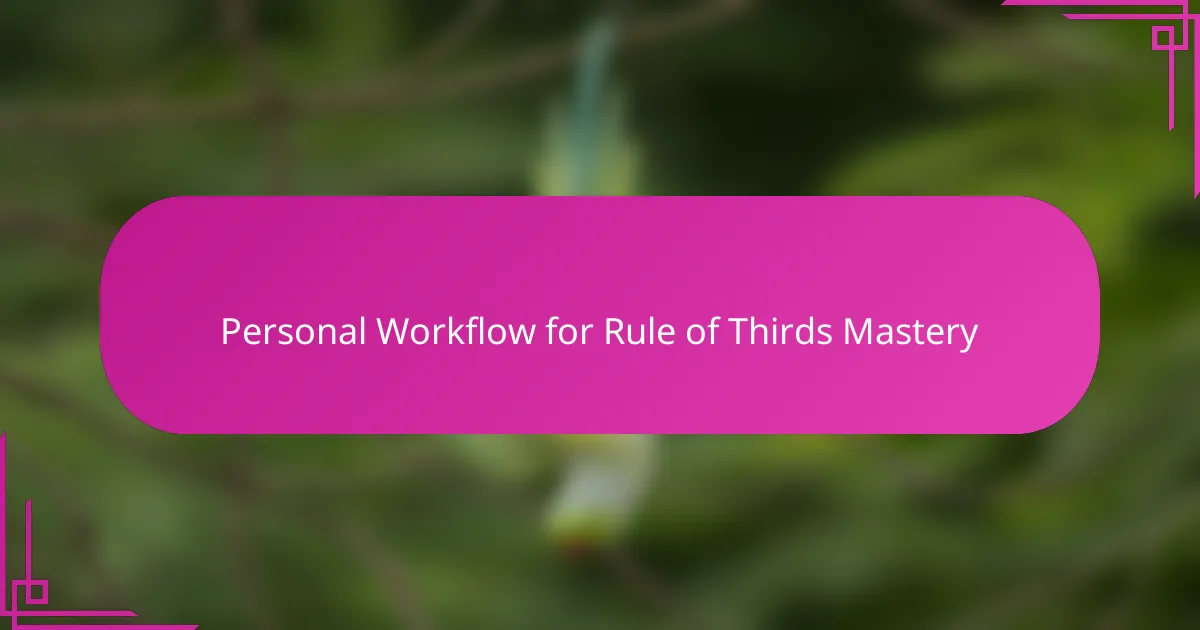
Personal Workflow for Rule of Thirds Mastery
My personal workflow for mastering the Rule of Thirds starts before I even raise my camera. I take a moment to visualize the scene as a grid in my mind, asking myself, “Where do I naturally want the viewer’s eye to land?” This mental preview helps me quickly decide which intersection or line feels right, turning what could be a technical exercise into an intuitive habit.
When I’m actually shooting, I rely heavily on the grid overlay feature. Early on, it felt awkward like I was overthinking every shot, but now it’s become almost subconscious. Have you ever noticed how repeatedly aligning subjects along the thirds trains your eye? That muscle memory is the real key—it frees me to experiment confidently while still keeping good composition front and center.
After capturing a few shots, my workflow shifts to review and reflect. I look for subtle imbalances or distractions that may have crept in despite following the rule. Sometimes, this reflection leads me to recompose or try new angles, showing me that mastering the Rule of Thirds isn’t about perfection, but about developing a flexible, thoughtful approach to framing each unique moment.
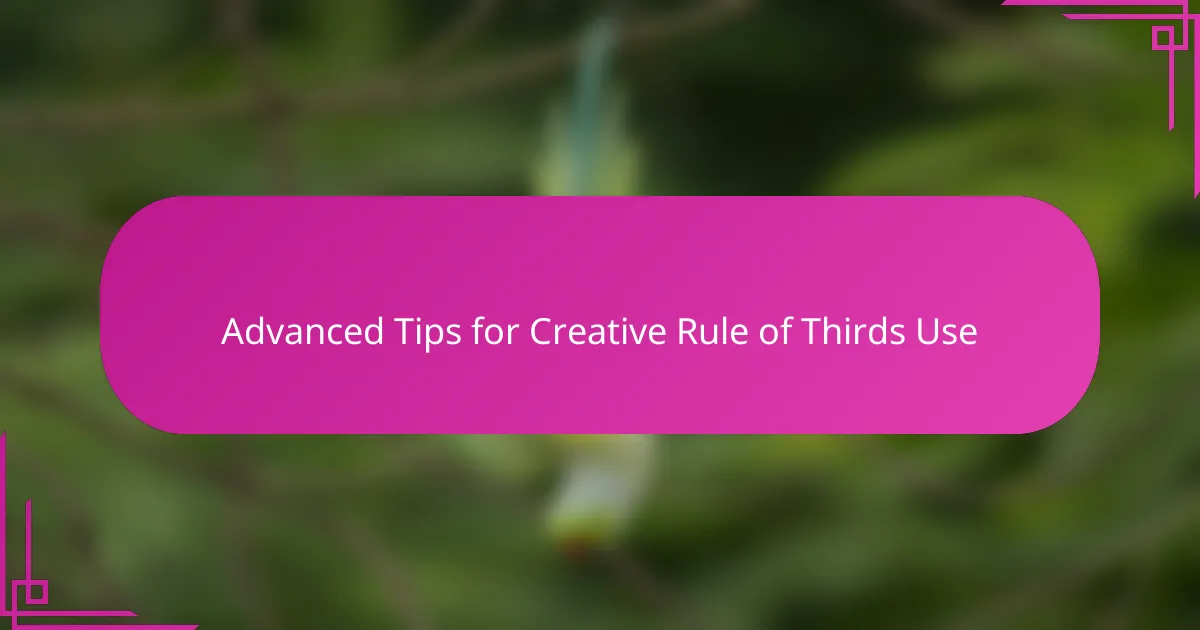
Advanced Tips for Creative Rule of Thirds Use
Stepping beyond the basics, I discovered that creatively bending the Rule of Thirds can lead to stunning results. For instance, placing multiple points of interest along the grid lines—rather than just one—creates a dynamic tension that keeps my eyes moving across the frame. Have you ever tried layering subjects this way? It transforms a simple shot into a story unfolding in segments.
Another trick I swear by is using negative space strategically within the thirds. Instead of crowding the frame, I leave intentional emptiness, which lets the subject breathe and invites viewers to imagine what’s outside the frame. Early on, I hesitated to do this because it felt like “wasting” space, but the impact it created was undeniable—less really can be more.
Lastly, I play with asymmetry by skewing elements just off the traditional thirds lines, challenging both my own sense of balance and that of the viewer. This technique adds a subtle surprise that feels fresh and modern. Ever wondered how far you can push these boundaries without losing harmony? Through experimentation, I found that trusting intuition over rigid grids often yields the most compelling images.
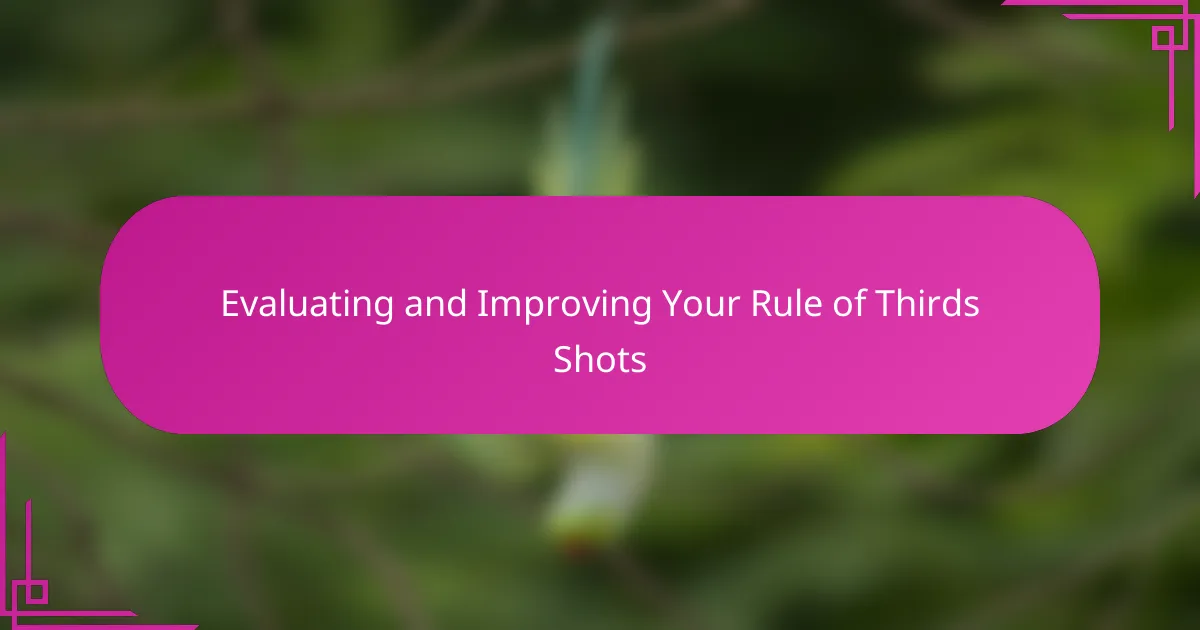
Evaluating and Improving Your Rule of Thirds Shots
When I evaluate my Rule of Thirds shots, I start by asking myself if the placement truly enhances the story I want to tell. Sometimes, even when I’ve aligned subjects perfectly on the grid, the image feels “off.” That’s usually a cue to check other elements like background distractions or awkward spacing that can throw off the balance. Have you ever felt like something was missing, even if the technical rules were followed? That’s where thoughtful evaluation becomes crucial.
Improving these shots often means making small adjustments—shifting the subject slightly along the lines or changing the angle to better complement the scene. I remember a time when a simple nudge of my main subject from one intersection to another transformed a lifeless photo into one that felt vibrant and inviting. It’s amazing how tiny tweaks can totally change the viewer’s experience.
After reviewing, I sometimes go back out to reshoot or experiment digitally with cropping to find the strongest composition. This reflective process has taught me that mastering the Rule of Thirds isn’t about perfection right out of the camera; it’s about being willing to adapt, explore, and refine. What’s your process for turning a good shot into a great one? For me, embracing this ongoing evaluation keeps my photography growing.